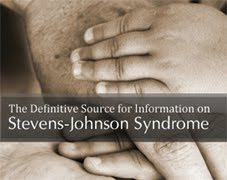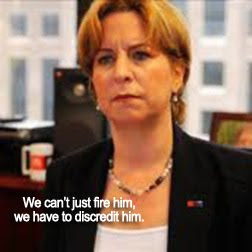When most people see the Kony 2012 communication campaign, they immediately think of it as an unprecedented success. With 76 million views and counting (50 million in the first four days), the YouTube video that relaunched a greater mixed media campaign has generated more awareness about the leader of the Lord's Resistance Army in Uganda than any other time in its 25-year history.
To be accurate, the campaign has had many successes and setbacks, but it has yet to be successful as there is only one measurable outcome: bring Joseph Kony to justice. Everything else is a means to an end. And that is how communication campaigns ought to be measured, regardless of other successes.
A Brief Summary Of The Kony 2102 Campaign.
Employing a communication strategy very similar to that of several early and successful campaigns used by Bloggers Unite to shape public opinion, Invisible Children has set a specific objective that has since risen to become a global agenda. How are they doing it?
• A communication campaign with a clear objective and definitive deadlines.
• A launch point that clearly articulates and humanizes its overall mission.
• A call to action to solicit partner support; benefactors, sponsors, and advocates.
• A visible level of commitment to working alongside volunteer participants.
• A wide range of tools and tactics that participants can choose from to help.
Specifically, the Kony 2012 campaign was initiated with a YouTube video as its primary introduction, which was supported by an existing presence across several social media networks. The intent was to drive visitors to a website where they found a tiered call to action: sign a pledge of support, purchase action kits that in turn can be used as marketing materials in support of the overall campaign goals, and sign up to donate to the campaign organizers, which also run several programs beyond the Kony 2012 campaign.
Some additional tactical components include asking participants to solicit/compel targeted celebrity and policy influencers to get involved, blanketing key urban centers with campaign material next month, encouraging activists to create clubs and street teams, and continuing to introduce people to the video.
A Brief Summary Of Successes To Date.
Prior to the launch of the film, Invisible Children had succeeded in raising awareness about the Lord's Resistance Army in Uganda. Its support contributed to the United States becoming involved in 2010 despite having no real interests in the area. This included sending 100 U.S. combat troops to central Africa as advisors and military trainers. The new campaign is more decisive with a clear measure of success.
Since the launch of the Kony 2012 campaign, Invisible Children has substantially increased awareness, recruited more volunteers than it can manage, obtained several new high-profile supporters, and raised more funds than it has in previous campaign years. It has also earned significant media attention, although not all of it is kind.
A Brief Summary Of The Setbacks To Date.
What began as a few questions about the initial message — specifically the poor choice of language which calls to make Kony famous as opposed to infamous — has since spiraled out of control for the campaign organizers. Invisible Children is in the hot seat as much as it is being hailed as a hero for heightening awareness.
Criticisms over the campaign have escalated to include accusations of imperialistic meddling, government propping, misguided targeting, nonprofit profiteering, and decentralizing the area by elevating the risk of retaliation. Some of the stiffest criticism comes from other activists, even those who have similar goals. Certain media outlets have pushed the organization out of favor too, especially those with a liberal slant, claiming that the campaign is fleeting and doesn't fit their own priorities.
The World Hasn't Changed; It's Still A Crummy Place.
If criticisms of the Kony 2012 campaign begin to outweigh its success, then this campaign could become a social failing more than a social success story. Invisible Children could find itself responsible for empowering the Lord's Resistance Army (or like-minded organizations) instead of empowering those who might defeat him if any number of other political intrusions disrupt the effort.
And then, even if the campaign does succeed, its own communication (prior to the launch of this campaign) says that it will make little difference. There are many branches of the Lord's Resistance Army that operate with near autonomy. While a singular achievable objective is smart, one is right to wonder if that singular objective is the right one or to what degree foreign assistance is welcome.
But don't mistake those observations as my personal opinion. Personally, I find the campaign backlash more boorish than any mistakes the campaign organizers have made, except one. Like many awareness campaigns, they're letting all of these early brilliant marketing accolades go to their heads before the outcome is achieved and consequences of achieving that outcome are fully understood.
Living case study ahead. Win or lose, the Kony 2012 campaign is worth following for awhile. In addition to other topics, I'll revisit the campaign from time to time to create a communication composite.
To be accurate, the campaign has had many successes and setbacks, but it has yet to be successful as there is only one measurable outcome: bring Joseph Kony to justice. Everything else is a means to an end. And that is how communication campaigns ought to be measured, regardless of other successes.
A Brief Summary Of The Kony 2102 Campaign.
Employing a communication strategy very similar to that of several early and successful campaigns used by Bloggers Unite to shape public opinion, Invisible Children has set a specific objective that has since risen to become a global agenda. How are they doing it?
• A communication campaign with a clear objective and definitive deadlines.
• A launch point that clearly articulates and humanizes its overall mission.
• A call to action to solicit partner support; benefactors, sponsors, and advocates.
• A visible level of commitment to working alongside volunteer participants.
• A wide range of tools and tactics that participants can choose from to help.
Specifically, the Kony 2012 campaign was initiated with a YouTube video as its primary introduction, which was supported by an existing presence across several social media networks. The intent was to drive visitors to a website where they found a tiered call to action: sign a pledge of support, purchase action kits that in turn can be used as marketing materials in support of the overall campaign goals, and sign up to donate to the campaign organizers, which also run several programs beyond the Kony 2012 campaign.
Some additional tactical components include asking participants to solicit/compel targeted celebrity and policy influencers to get involved, blanketing key urban centers with campaign material next month, encouraging activists to create clubs and street teams, and continuing to introduce people to the video.
A Brief Summary Of Successes To Date.
Prior to the launch of the film, Invisible Children had succeeded in raising awareness about the Lord's Resistance Army in Uganda. Its support contributed to the United States becoming involved in 2010 despite having no real interests in the area. This included sending 100 U.S. combat troops to central Africa as advisors and military trainers. The new campaign is more decisive with a clear measure of success.
Since the launch of the Kony 2012 campaign, Invisible Children has substantially increased awareness, recruited more volunteers than it can manage, obtained several new high-profile supporters, and raised more funds than it has in previous campaign years. It has also earned significant media attention, although not all of it is kind.
A Brief Summary Of The Setbacks To Date.
What began as a few questions about the initial message — specifically the poor choice of language which calls to make Kony famous as opposed to infamous — has since spiraled out of control for the campaign organizers. Invisible Children is in the hot seat as much as it is being hailed as a hero for heightening awareness.
Criticisms over the campaign have escalated to include accusations of imperialistic meddling, government propping, misguided targeting, nonprofit profiteering, and decentralizing the area by elevating the risk of retaliation. Some of the stiffest criticism comes from other activists, even those who have similar goals. Certain media outlets have pushed the organization out of favor too, especially those with a liberal slant, claiming that the campaign is fleeting and doesn't fit their own priorities.
The World Hasn't Changed; It's Still A Crummy Place.
If criticisms of the Kony 2012 campaign begin to outweigh its success, then this campaign could become a social failing more than a social success story. Invisible Children could find itself responsible for empowering the Lord's Resistance Army (or like-minded organizations) instead of empowering those who might defeat him if any number of other political intrusions disrupt the effort.
And then, even if the campaign does succeed, its own communication (prior to the launch of this campaign) says that it will make little difference. There are many branches of the Lord's Resistance Army that operate with near autonomy. While a singular achievable objective is smart, one is right to wonder if that singular objective is the right one or to what degree foreign assistance is welcome.
But don't mistake those observations as my personal opinion. Personally, I find the campaign backlash more boorish than any mistakes the campaign organizers have made, except one. Like many awareness campaigns, they're letting all of these early brilliant marketing accolades go to their heads before the outcome is achieved and consequences of achieving that outcome are fully understood.
Living case study ahead. Win or lose, the Kony 2012 campaign is worth following for awhile. In addition to other topics, I'll revisit the campaign from time to time to create a communication composite.




































